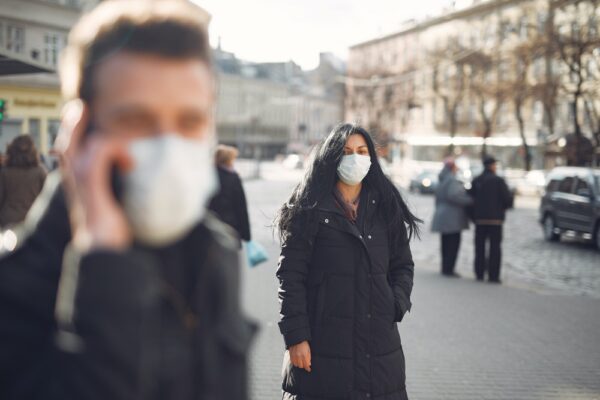As research dives deep into getting to know more about the new coronavirus disease, a growing number of doctors have documented a handful of unexpected symptoms in patients diagnosed with COVID-19.
COVID-19 is largely recognized as a respiratory infection that can cause fever, coughing, and difficulty breathing. But there have emerged cases where some people have presented with less typical symptoms, which involves nausea, delirium, chickenpox-like lesions, and more.
These atypical symptoms reinforce what experts around the world have come to realize- the coronavirus (SARS-CoV-2) is capable of causing more than a respiratory illness; it can launch a full-body attack, affecting other organ systems.
Learning about signs that fall outside the hallmark symptoms of COVID, may help you recognize if you or someone you know has caught the disease.
Skin rashes and “COVID toes”
Dermatologist in Italy assessed 88 people who had COVID infection and found roughly 20 percent had skin symptoms. Those skin symptoms consisted of a red rash, widespread hives, or chickenpox-like lesions. Other reports included similar results- head-to-toe red rashes, hive-like eruptions, blister-like bubbles and even lacy, purply rashes spreading across larger patches of skin. The lesions with red tender bumps that appear around the toes and heels has led it to be dubbed as “COVID toes.” These skin changes might appear at the same time as other symptoms and are associated with more severe infections.
The good news is, they do go away. This symptom typically lasts about a week or 12 days and don’t require hospitalization for care.
Though most cases of COVID toes occur in the feet, the hands can be affected, too.
Delirium or Muscle Weakness
Confusion, delirium, and other neurological symptoms have also been observed in some people with COVID-19, as per the in JAMA Neurology, which found more than 36 percent of 214 patients in Wuhan, China, experienced neurological symptoms during their bout of COVID-19.
This unusual symptom is more recognized in older people as the pulmonary impacts of a coronavirus infection. They can also be easily overlooked or dismissed as dementia or other diseases common with aging.
Milder neurological symptoms of COVID-19, such as loss of taste or smell, headache, dizziness, or muscle weakness, may appear early in the illness.
Loss of Smell or taste
In addition to fever, chills and a sore throat, the public health agency, CDC recognizes new loss of taste or smell as evidence of a coronavirus infection. COVID-19 might cause absence of smell or taste—without nasal congestion.
A study published in the journal Nature Medicine tracked more than 2.5 million participants who reported their potential symptoms of COVID-19 on a smartphone app. About 65 percent of people who tested positive for COVID-19 reported loss of taste and smell, making it one of the strongest predictors of the illness among those studied.
So far, researchers are learning that SARS-CoV-2 particles are heavily concentrated in the area where the nose, throat and mouth meet. The damage may be caused by the inflammatory reaction that causes tissues to swell and compress and compromise the nerves, or because of more direct viral infection. Some research also suggests that loss of smell or taste might be an early predictor of COVID-19.
Blood Clots and Stroke
Another group of more urgent risks arising from reports of people affected by COVID-19 has to do with blood clots, including those that can lead to stroke. Some studies have found that as many as 30 percent of people with severe cases of COVID-19 experience abnormal blood clotting.
When clots occur in the lungs, heart, or brain, it can cause more serious complications, such as pulmonary embolism, heart attack, or stroke. Some experts believe covid virus could be uniquely damaging to the circulatory system.
Blood clots may be directly caused by the coronavirus and its interaction with the clotting pathway, which means the virus could be directly infecting the cells that line the vessels and, therefore, contributing to clot formations. A hyperimmune response is another explanation experts are exploring.
Persistent Hiccups
One of rarer signs of COVID-19, two patients in the US shown hiccups as their only major symptom. It’s still very early to say anything concrete about the relation between the disease and persistent hiccups. A lot more research is required to find more about it, according to experts.
With more than 20 million cases of coronavirus worldwide, one thing is clear: The symptoms are varied and strange, they can be mild or debilitating, and the disease can progress, from head to toe, in unpredictable ways.
The reports of these non-respiratory effects started to build as doctors began treating more and more patients, and much of current scientific understanding of them is still in the early stages. But recognizing they exist could help the healthcare system spot them sooner, and possibly minimize their effects on patients’ health.


